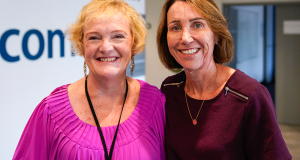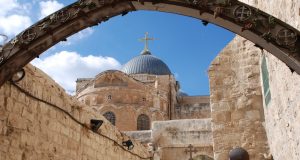
I KNOW nothing about art.
When I visited the art galleries of Europe I admit that I didn’t really understand most of the art works I saw, and sometimes wondered why they are called art and deserved a place in a gallery.
However I remember the wisdom of a minister of my childhood, who said that a person who says they don’t like classical music passes judgement on themselves, not the music of the masters.
Throughout Europe the art that interested me most was the art of the Cathedrals.
Mostly however I found myself marvelling at the skill and dedication of those who spent years creating these visual feasts.
St Mark’s Basilica in Venice has 8000 square metres of gilded mosaics on the walls, vaults and cupolas that tell both biblical stories of the Old and New Testaments as well as the stories of the saints and allegorical tales of a people of faith.
This art developed over centuries and stands in stark contrast to the transitory images of modern multimedia attempts to convey the faith in our rather stark places of worship.
Despite my fascination even these impressive displays of art seemed didactic, rarely touching me at any deep level.
I was surprised therefore when I encountered two most well known and acclaimed pieces of art. The first was the effect Michelangelo’s sculpture of David had on me and the second was seeing Leonardo da Vinci’s Mona Lisa.
Like most people I had seen pictures of these. Yet as I stood before each of them I found myself transfixed. There seemed to be a life in each that caught hold of me.
I still wonder at the experiences and found myself wanting to learn more about the artists and what motivated them.
As I have discussed this experience with others, I find that not everybody responds as I did.
Many say that they are disappointed with the Mona Lisa. It seemed less impressive than they expected; it was smaller than they expected; they were more impressed with da Vinci’s huge painting The Last Supper that hung at the opposite end of the room.
I guess it shows that art touches people in different ways.
In my office I have three paintings that break up the monotony of the walls.
What is special to me about them is that they speak to me about the artists and those who gave them to me.
One is a scene of the Peak Ranges and was painted by Kaye Dahlenburg who was a member of Capella congregation. It was given to me as a farewell gift.
The second is a rural landscape painted by Glen Barnett, a colleague from my days in Trinity College. Glenn is wheelchair-bound and paints with a brush in his mouth.
I bought it because it spoke to me of a person of deep faith who did not let his physical limitations stop him from responding to God’s call on his life.
The third is the painting of an Aboriginal elder from Mornington Island painted by my sister, Allana, who spent several years there as a nurse.
It speaks to me of the ancient wisdom of the Indigenous people of this country.
In these three works it is the artists who are most significant to me. Their art reminds me of them; it helps me understand something about them; it helps me retain my relationship with them.
I have a deep appreciation of the world in which I live. When I am transfixed by the beauty of our world I am deeply mindful of the artist who created it.
Moments of awe at the size and wonder of the world remind me of God’s presence; help me understand God, and affirm my relationship with God.
As a Christian I recognise that my most authentic experience of God comes through Jesus Christ, who is God in a form I can understand.
In Jesus Christ I see the desire of God the creator to be at one with all creation. I see not only all that we humans might be, but all that we can be in Christ.
I don’t always understand my experiences of God; I don’t always appreciate God but occasionally even I am shaken by God through the art of others.
 JourneyOnline
JourneyOnline






